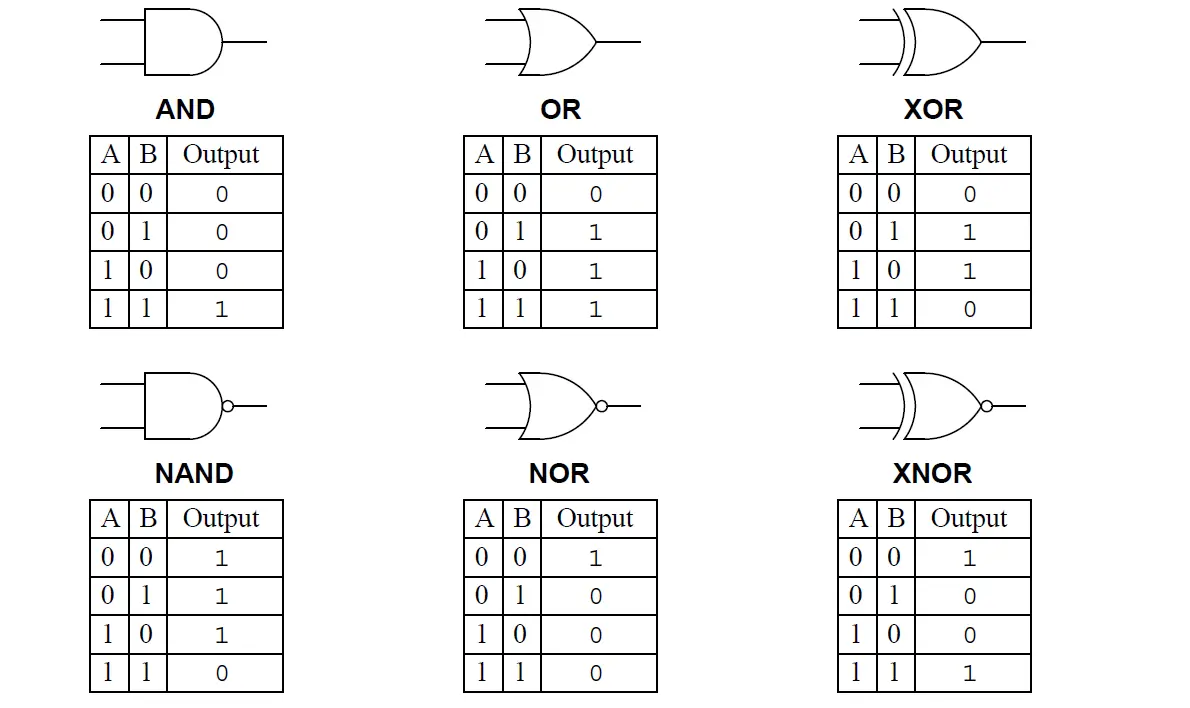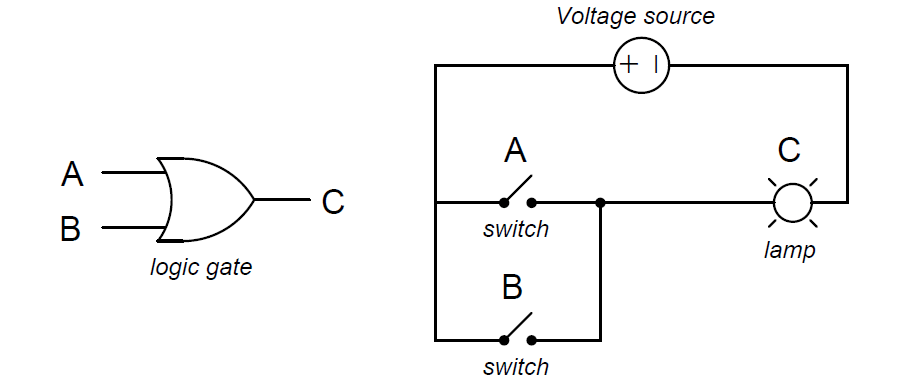The word “discrete” means individual or distinct. In engineering, a “discrete” variable or measurement refers to a true-or-false condition. Thus, a discrete control system is one designed to operate on Boolean (“on” or “off”) signals supplied by discrete sensors such as process switches. A form of discrete control taught in every introductory course on digital electronics involves the use of circuits called logic gates. These circuits input one or more Boolean signals, and output a Boolean signal according to a simple rule such as “AND” or “OR”:

Industrial control systems rarely utilize logic gates in a direct fashion for discrete control systems, although the fundamental concepts of “AND,” “OR,” and other gate types are universally applied. Instead, control functions are either implemented using electromechanical relays and/or with programmable digital devices such as PLCs (Programmable Logic Controllers).
An “AND” function is equivalent to series-connected normally-open contacts in a relay control circuit, because the lamp will energize only if switch A and switch B are actuated:

An “OR” function is equivalent to parallel-connected normally-open contacts in a relay control circuit, because the lamp will energize if switch A or switch B is actuated:

The “NOT” function is equivalent to a single normally-closed contact in a relay control circuit, because the lamp will energize only if the switch is not actuated:


good work though you should explain further in order to be understood well
It’s very nice answer . Thanks a lot??
Thanks alot iam realy injoyed when iread isee
How is electronics and
Automation is easing the
Work especially when iam
Compared to the time iuse
To make automation my self iam 70 years old